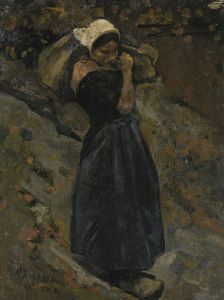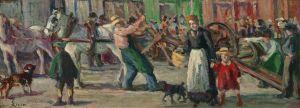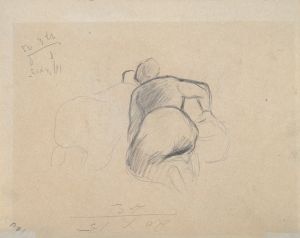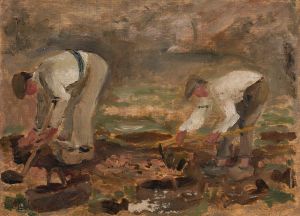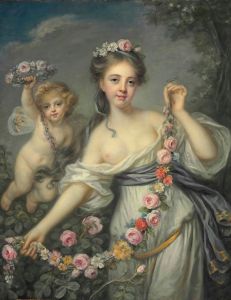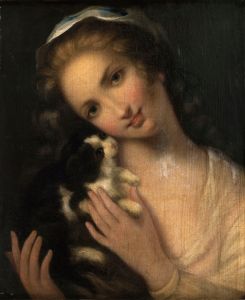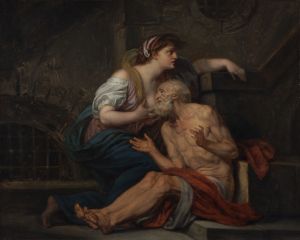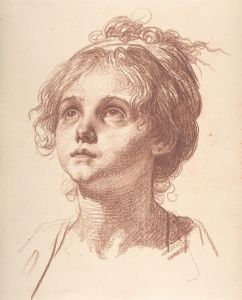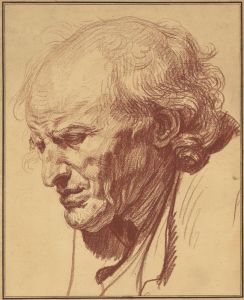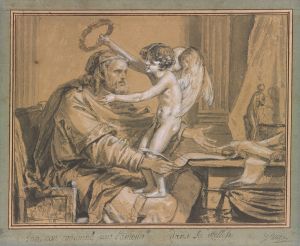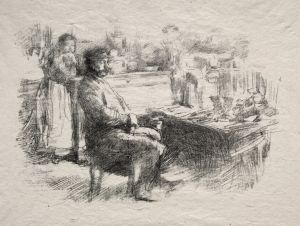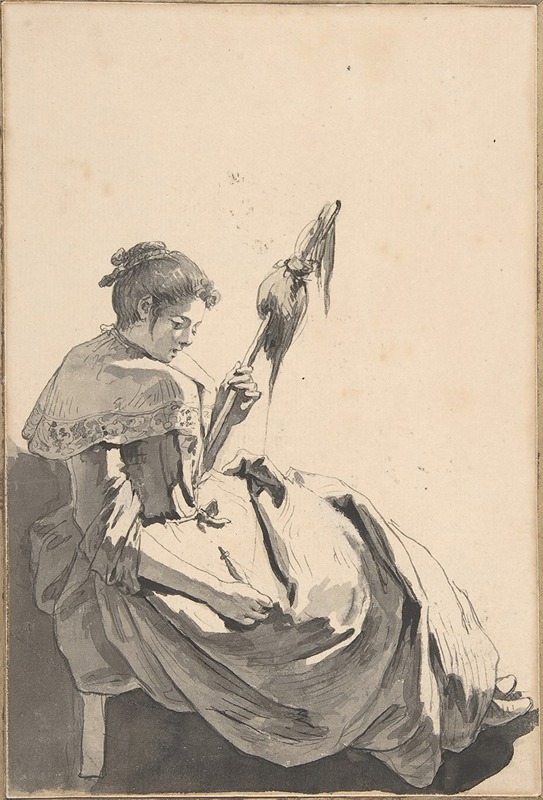
Bolognese Peasant Girl with a Distaff
A hand-painted replica of Jean-Baptiste Greuze’s masterpiece Bolognese Peasant Girl with a Distaff, meticulously crafted by professional artists to capture the true essence of the original. Each piece is created with museum-quality canvas and rare mineral pigments, carefully painted by experienced artists with delicate brushstrokes and rich, layered colors to perfectly recreate the texture of the original artwork. Unlike machine-printed reproductions, this hand-painted version brings the painting to life, infused with the artist’s emotions and skill in every stroke. Whether for personal collection or home decoration, it instantly elevates the artistic atmosphere of any space.
"Bolognese Peasant Girl with a Distaff" is a painting by the French artist Jean-Baptiste Greuze, known for his genre paintings and portraits that often depicted scenes of domestic life and moral narratives. Greuze was a prominent figure in 18th-century French art, and his works are celebrated for their detailed realism and emotional depth.
The painting portrays a young peasant girl from Bologna, Italy, engaged in the act of spinning wool with a distaff. The distaff, a tool used in the process of spinning fibers into thread, is a central element in the composition, symbolizing domestic labor and the traditional roles of women during the period. Greuze's attention to detail is evident in the realistic depiction of the girl's clothing and the texture of the materials, highlighting his skill in rendering everyday life with authenticity.
Greuze's work often carried moral or sentimental undertones, and "Bolognese Peasant Girl with a Distaff" is no exception. The painting reflects the artist's interest in themes of innocence and virtue, common in his portrayals of young women and children. The girl's serene expression and the simplicity of her task suggest a sense of purity and diligence, qualities that were highly valued in the societal context of the time.
Jean-Baptiste Greuze was born in 1725 in Tournus, France, and trained in Lyon before moving to Paris, where he gained recognition for his genre scenes and portraits. His works were well-received at the Salons, the official art exhibitions of the Académie des Beaux-Arts in Paris, where he exhibited regularly. Greuze's style is characterized by its blend of Rococo elements with a more naturalistic approach, setting him apart from many of his contemporaries.
"Bolognese Peasant Girl with a Distaff" is an example of Greuze's ability to capture the subtleties of human emotion and the nuances of everyday life. His paintings often conveyed a narrative, inviting viewers to engage with the story behind the image. This particular work is part of a broader tradition of genre painting that sought to elevate scenes of ordinary life to the level of fine art.
The painting is housed in a museum collection, where it continues to be appreciated for its artistic merit and historical significance. Greuze's influence extended beyond his lifetime, impacting later artists who admired his ability to blend technical skill with emotional resonance.
In summary, "Bolognese Peasant Girl with a Distaff" exemplifies Jean-Baptiste Greuze's mastery of genre painting and his focus on themes of innocence and virtue. Through his detailed and emotive portrayal of a simple domestic scene, Greuze invites viewers to reflect on the beauty and dignity of everyday life.





